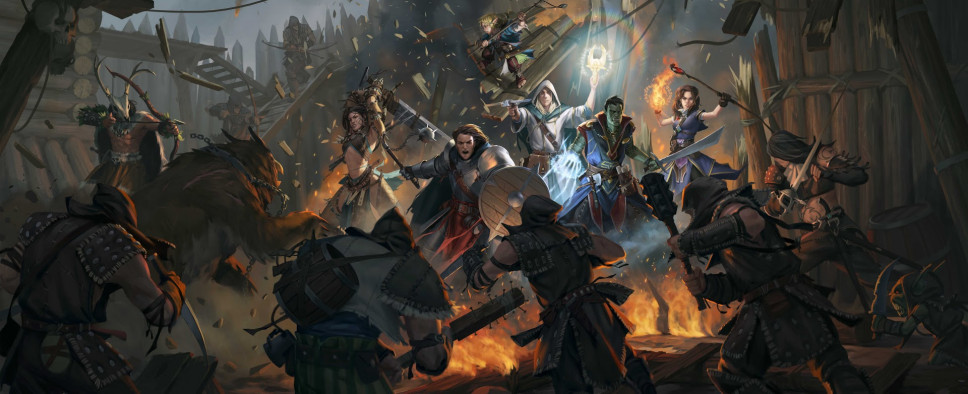Pathfinder: Kingmaker Updates, $411,150 and Counting
-
Category: News ArchiveHits: 2242

A couple of updates have gone up for the Pathfinder: Kingmaker Kickstarter campaign, as it continues moving towards its initial $500k goal, with $411,150 already pledged. Surprisingly enough, these updates don't mention the inevitable stretch goals. Instead, Update #5 talks about the tabletop roots of the Kingmaker CRPG, and how playing through the Adventure Path with multiple GM's influenced Owlcat's design decisions. Check it out:
You all have your favourite memorable events in the Kingmaker Adventure Path and many of you wanted to know, if and how they will make it into the computer game and how they will play out. So in today's update, let us tell you about our approach to transitioning events from tabletop to the computer game experience. Every member of our team is playing the Kingmaker campaign on the table to have a first-hand experience of the campaign, its story, NPCs, and events. We are split into several parties, who get together regularly to share their exploits. Each party is excited to share their stories and make sure that their experience will be translated into the game somehow. Let's take Candlemere tower as an example – all our GMs approached this event differently, each of them imagining old gods and faith in their own way. One party experienced it as an underground complex filled with strange devices and substances, while another had a more horror-like experience and tried to deal with a swarm of will-o'-wisps that came to feed on their fears. We discussed those experiences and decided to make Candlemere a more prominent location with ties to the… let’s call it the 'important quest' (to avoid spoilers).
Or take the encounter with a Hill Giant, who is not an ordinary aggressive monster, but a sad creature, who is searching for his mate and suffering from a severe hangover. Players in one of our groups decided they wanted to console him and even hire him to be the kingdom strongman. They brewed a barrel of strong drink just for him! Alas, due to some tragic events, they ultimately found the poor giant dead.
These experiences are great examples for the freedom of choices and decisions many of you want to see in the CRPG, and as players ourselves, we are going a long way to providing as many different options as possible for all of the incredible events from the adventure path. You will be able to decide the fate of the Sootscale tribe or the kobolds on the radish patch, try to save the Jubilost’s cart or talk to a sad giant, avoid cruel spriggan jokes or participate in the Rushlight tournament.
Update #6 describes the process of designing areas for the game. From a rough idea to a fully functional game map, we get to see an entrance to a dwarven outpost take shape. And then, we get to read about the tools used to make it happen. An excerpt:
General plot and blockout of the gameplay area. Usually, when the work on a map begins, the story is already written, so our map designers have a general idea of what's going on with that map. First, they create the rough geometry of the location, and then they add approximate gameplay elements: we're placing enemies, adding blanks for dialogues, attaching scripted events, and placing traps and hidden items. This way, we can playtest the map at as early as possible and fix mistakes and problems, which would require more effort to change in the final version of the map. We use prototypes for almost everything in the development – for example, when we first started working on our game, all creatures shared the same model. So players could meet dogs, kobolds, ponies, and trolls, all of which looked like bandits.
Adding the content. After our designers' playtests the rest of the crew gets to work: the artists create concepts and make models of map elements, the writers finalize the dialogue texts, the programmers add in the mechanics. This time is the most difficult in the process of map-creating. In this stage, it's especially important for the designer to make sure the design stays intact during these alterations.
We want to give you the full Golarion experience, and for that locations must express game atmosphere in every detail, so map design takes a lot of time and effort. In Owlcat Games map-decoration is a task for artists, not for designers, like in many other companies. This way the designers get more time to plot out the flow of the map and add gameplay content to the location.
Finalization. When the map content is ready, the designer syncs gameplay with the final artistic version of the location and passes it to the testing department. In this stage, we finalize navigation, settings for the fog of war and the rewards. The only thing remaining is to add the location to the global map.

